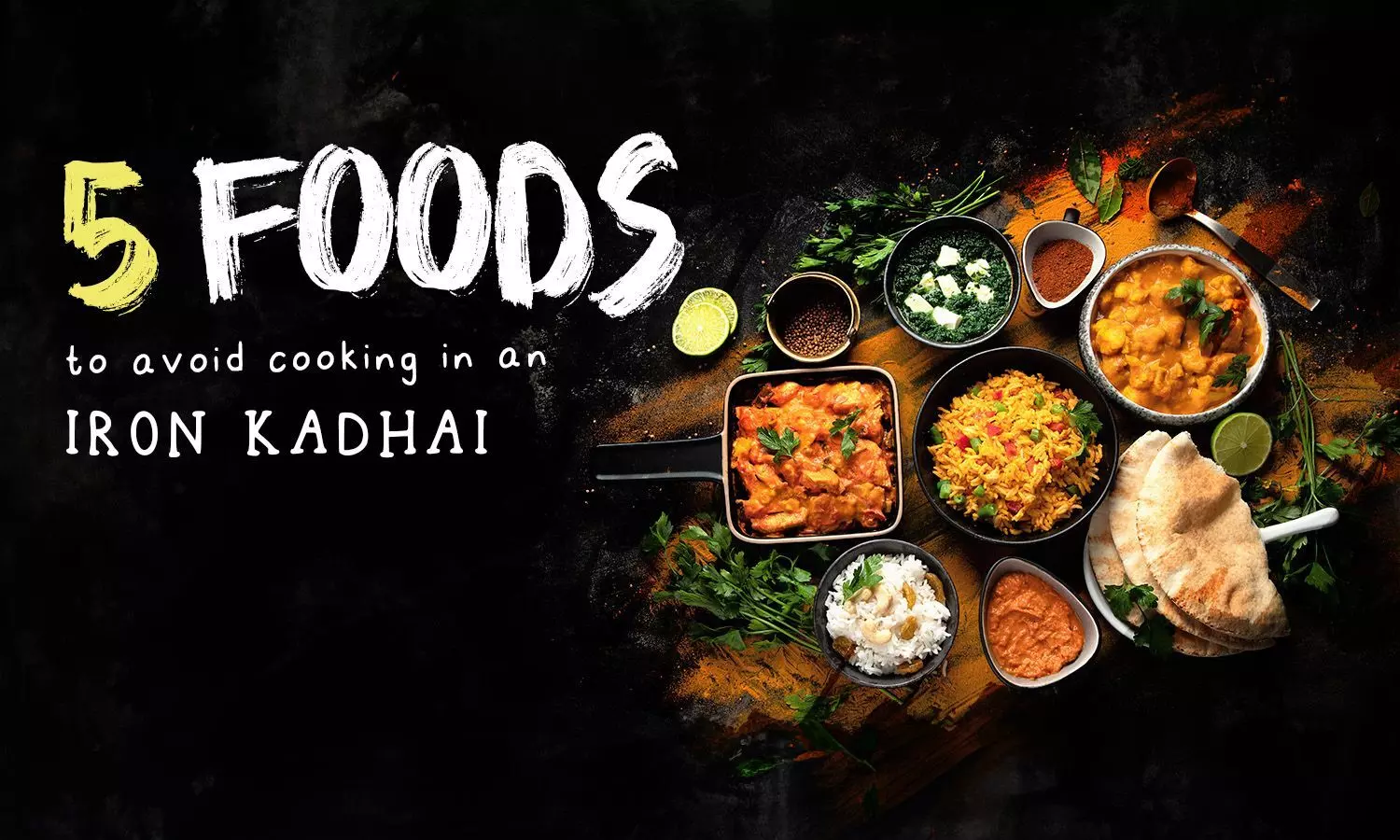Live
- They always want me to win, and now I feel lucky to have been offered a story like ‘Zebra’: Satyadev Kancharana
- ‘Democracy first, humanity first’: PM Modi in Guyana's parliament on two countries' similarities
- PKL Season 11: Telugu Titans register third straight win to top standings
- Is Pollution Contributing to Your COPD?
- NASA Unveils Underwater Robots for Exploring Jupiter's Moons
- Additional Central forces arrive in violence-hit Manipur
- AR Rahman and Saira Banu’s Divorce: Legal Insights into Common Issues in Bollywood Marriages
- 82.7 pc work completed in HPCL Rajasthan Refinery area: official
- Curfew relaxation extended in 5 Manipur districts on Friday
- Tab scam prompts Bengal govt to adopt caution over fund disbursement
Just In

What to not cook in an iron kadhai
While the iron kadhai is valued for its exceptional heat retention and distribution, which enhance flavours in many dishes, it may not be suitable for every type of food. Let us explore a list of food items that are not well-suited for cooking in an iron kadhai.
One of the conventional cooking utensils, the iron kadhai, is found in almost every household. From being your grandmother's top choice for Pav Bhaji, your mother's quick pick for Chicken Curry, to your go-to for Fish Fry, this black-coloured utensil is not only getting passed down from one generation to another but continues to be a family favourite for many different recipes. Despite having an abundance of new cookware in our home, we always seem to resort back to the classic iron kadhai.
Though iron kadhai is considered beneficial as it thrives on exceptional heat retention and distribution qualities that result in flavour enhancement, it might not quite be the case for every dish. Certain food items, when cooked in iron kadhai, can wind up causing food reactions and destroying the dish's flavour and consistency.
Here's a list of food items that are not so compatible with iron kadhai:
Acidic food items: Food items that involve the use of acidic ingredients like lemon, tomatoes or vinegar should definitely not be cooked in an iron kadhai. Doing so can trigger an unlikely chemical reaction that could influence the taste of the food and lead to discolouration as well. Thus, when preparing tomato-based curries like paneer, sambhar, kadhi, or rasam, it is ideal to go with non-reactive cookware like enamel or stainless steel to avoid the acidic ingredients leaking dangerous metals into your food.
Fish: Fried fish alongside a mug of chilled beer is no less than an ideal meal starter. When hosting a house party, the crispy fish fry is one sure decided snack. However, preparing this delicious treat in the iron kadhai could be your biggest mistake. The acids present in fish can react with the iron, causing it to stick to the bottom of the vessel, hampering its texture. Additionally, iron can give fish an unpleasant metallic flavour. Therefore, when preparing your favourite fish for your next house party, it is best to use non-reactive cookware to preserve the flavour and texture of the dish.
Rice: Who does not love light, fresh pulao or spicy fried rice? However, preparing it right is very crucial. Whatever vessel you choose to prepare rice in, make sure not to choose an iron kadhai. The highly acidic nature of rice can react with iron to produce an off-putting flavour and discolouration. A heavy-bottomed pot made with stainless steel is the ideal vessel for cooking rice, as it not only prevents the rice from sticking to the bottom but also retains its flavour.
Pasta: When preparing pasta at home, the majority of us choose an iron kadhai to do so. However, in reality, that black iron vessel is the biggest enemy of pasta. Especially when it comes to red sauce or pink sauce pasta, the acidity of the tomato-based sauce can cause a reaction with the iron, resulting in an unusual flavour. Moreover, the heat retention capabilities of iron kadhai can cause the pasta to overcook.
Leafy greens: Palak paneer or palak corn alongside Lachha paratha is surely the best main course meal one could think of. However, when preparing the delicious palak paneer, we often end up choosing the iron kadhai, which ends up robbing the dish of all the taste and flavour. This happens because leafy green vegetables like spinach and collards contain oxalic acid, which, when cooked in an iron kadhai, can cause them to lose their taste and colour.
While there is nothing wrong with cooking in an iron kadhai, there are certain food items that do not fit well with the vessel. Therefore, it is best to use non-reactive cookware to preserve the original flavour of these delectable treats and to enjoy the best of them.

© 2024 Hyderabad Media House Limited/The Hans India. All rights reserved. Powered by hocalwire.com







